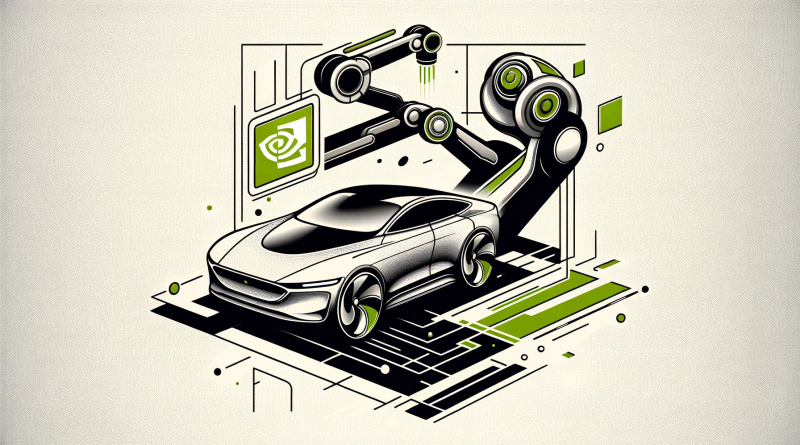Nvidia Displays Collaborations with Car Manufacturers and Utilizes Generative AI in Robotics
Nvidia made a splash at CES 2024 today, unveiling its latest automotive and robotics innovations and partnerships.
The company announced a surge in its automotive partners, highlighting the role of AI in revolutionizing automotive design, engineering, and performance. This announcement was part of an online event at CES 2024.
AI and software-defined computing are becoming increasingly influential in the automotive sector, driving forward a wave of innovations that promise to transform driving experiences in the near future. This trend is also evident in the field of robotics, according to Nvidia.
A key partner, Mercedes-Benz, is at the forefront with its Mercedes-Benz MB.OS featured in several models. The Concept CLA Class, featuring Nvidia Drive Orin for automated driving, is a standout, showcasing Nvidia’s Omniverse for production digital twins, enhancing manufacturing and assembly processes.
Ansys, another partner, is leveraging Nvidia Omniverse for accelerated autonomous vehicle development through its Ansys AVxcelerate Sensors in Nvidia Drive Sim, focusing on sensor data for enhanced car safety.
Cerence has introduced CaLLM, a bespoke large language model for the automotive sector, as the basis for its next-generation in-car computing platform, powered by Nvidia Drive.
Cipia has revealed Cabin Sense, a driver and occupancy monitoring system set for serial production this year, aimed at boosting safety.
Kodiak’s autonomous trucks are powered by Nvidia GPUs for high-performance computing, essential for processing extensive sensor data for autonomous driving. They are collaborating with Luminar.
Lenovo has disclosed its vehicle computing roadmap, featuring products based on Nvidia Drive Thor for advanced driver-assistance systems and autonomous driving.
Pebble has exhibited Pebble Flow, an electric semi-autonomous travel trailer powered by Nvidia Drive Orin, a notable advancement in recreational vehicle technology.
Polestar’s Polestar 3, with Nvidia Drive Orin and a partnership with Google, highlights advanced automotive computing capabilities.
Electric vehicle manufacturers like Great Wall Motor, Zeekr, Li Auto, and Xiaomi have adopted the Nvidia Drive Orin platform for their intelligent automated-driving systems.
Xinzhou Wu, Nvidia’s VP of Automotive, emphasized the growing industry trend towards centralized compute for highly automated and autonomous driving, citing Nvidia Drive Orin as the preferred AI car computer. He also highlighted the advanced capabilities of its successor, Nvidia Drive Thor, in future automotive roadmaps.
Nvidia Drive Thor, a next-gen centralized car computer, combines a range of intelligent functions into a single AI compute platform, delivering autonomous driving and parking, driver and passenger monitoring, and AI cockpit features.
The Xiaomi EV, with ranges of up to 415 and 497 miles on a single charge, is set to launch in the first half of 2024.
Danny Shapiro, Nvidia’s VP of Automotive, spoke of a “seismic shift” in transportation, driven by advances in accelerated computing, generative AI, and digital twins. He highlighted the role of Nvidia Drive and Omniverse platforms in vehicle design and workflow transformation.
Gerard Andrews, Nvidia’s Product Marketing Manager for Robotics, mentioned the introduction of generative AI to Nvidia’s Isaac robotics platform, with companies like Boston Dynamics utilizing it for flexible problem-solving in environments like warehouses.
Deepu Talla, Nvidia’s VP of Robotics and Edge Computing, provided insights into the increasing application of generative AI in Nvidia’s robotics ecosystem, highlighting its impact on human-robot interaction and the progress of robotics innovators like Boston Dynamics and Collaborative Robots.

